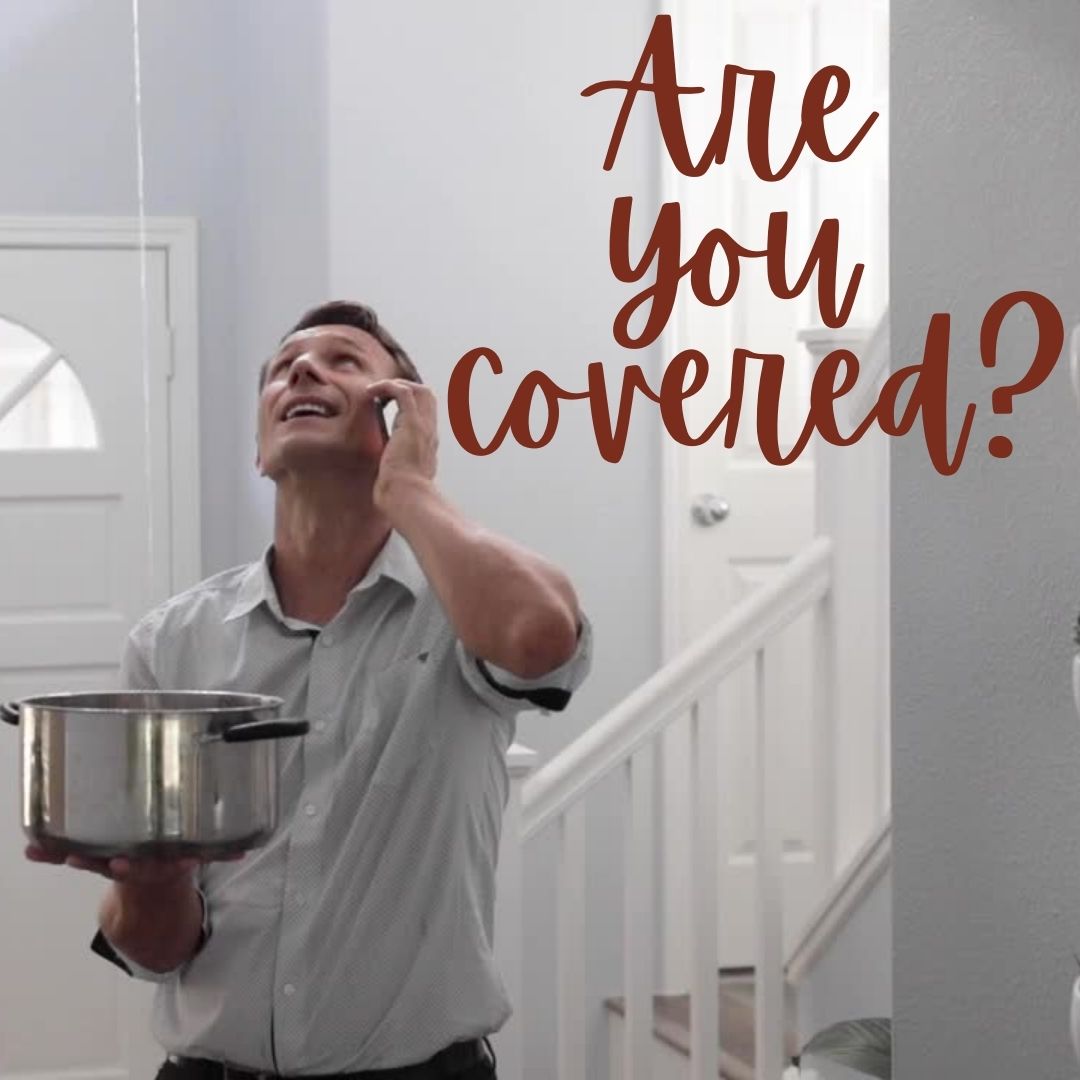
Water Damage – Are You Covered?
 “Am I covered if water gets in my house?” is a common question I get from homeowners who are purchasing insurance. As in most situations with insurance, the answer is “It depends.” There are multiple different sources of water and, although each can be insured, a combination of policies are required to ensure all forms of potential water damage are covered.
“Am I covered if water gets in my house?” is a common question I get from homeowners who are purchasing insurance. As in most situations with insurance, the answer is “It depends.” There are multiple different sources of water and, although each can be insured, a combination of policies are required to ensure all forms of potential water damage are covered.
For my clients, I break down water damage into four distinct categories, and their related coverages:
1. Water that falls from the sky and penetrates the roof
Rain that penetrates roof openings and damages the interior of the house is typically covered by a good-quality homeowners policy. Often, we see this type of damage in conjunction with a large wind or hail storm that severely damages a roof and allows significant water penetration. The roof itself, might or might not be covered, based on various other factors, but the subsequent damage caused inside the house by the incoming water is typically covered. In this case, the water has not yet hit the ground and, instead, penetrates prior to hitting the ground. Not all homeowners policies are equal, there are some policy types with limited coverage that don’t cover this type of damage, which is why purchasing well rounded, quality policies does matter.
2. An interior water pipe or appliance that spontaneously springs a leak
In general, water that escapes from interior plumbing systems is also covered by most quality policies. Water leaks from interior plumbing can do serious damage to floors and low lying cabinets. When a pipe breaks behind a wall, sometimes the only sign is a wet, soggy floor. Limited policies can exclude this damage, but a good-quality policy from a reputable agent will typically cover this type of damage. It is important to note most policies exclude water damage caused by long-term, ongoing seepage. Policies are designed to cover a spontaneous leak that is quickly discovered, not a long drawn out event. Interestingly, insurance will not cover the cost of the broken pipe or appliance but will cover the resulting water damage. This means you might have a $20,000 water claim paid, but you would have to pony up for the $3 replacement pipe. It’s important to address the water issue immediately and have it properly dried because consequential mold growth is likely not covered. Your insurance coverage will pay for a water remediation company to properly remove the water and you should start that expeditiously.
3. Overflow and Backup of sewers or drains
A third source of water comes from drains. Whether it is a shower, toilet, or sink, the backflow of water that doesn’t drain properly (or backs up) can spill out and do damage as well. There is an important distinction to understand between backup and overflow. “Overflow” occurs when there is a blockage that prevents water from draining in the first place and then overflows into your house (think clogged toilet). “Backup” is when water travels backwards through pipes and ultimately out your drain. Backup includes water backing out of sump pumps. Overflow is typically covered on “all risk” or “open” peril policies. These are high-quality, broad policies that provide strong coverage. However, most policies exclude backup unless specifically included by an endorsement. This means you should always check your policy for these two items.
4. Flood
The final type of water that can damage a home is flood water. Flood has a much broader definition in the insurance world that you might expect. I tend to explain it as “any water that has first touched the ground” and then enters your home. It could be rising waters in a neighborhood, overflow of a lake or reservoir, or tidal waters that come inland. The important issue is that flood is not covered by a homeowners policy. Flood policies are always sold separately from a homeowners policy. Although some homeowners might be required to purchase a flood policy as part of their home mortgage, there is no limitation on who can purchase a policy. You need not live in an official “flood zone” to be eligible to purchase flood insurance and I recommend it to all my customers because of the breadth of the definition of flood.
As always, general guidelines are never a substitute for a qualified insurance professional to review your specific policy and coverage. Every policy contains unique wording and endorsements and you should work with your agent to verify the coverage you need. There are so many nuances to homeowners policies (just within water coverage) that it is important to work with an experienced and knowledgeable insurance broker.
